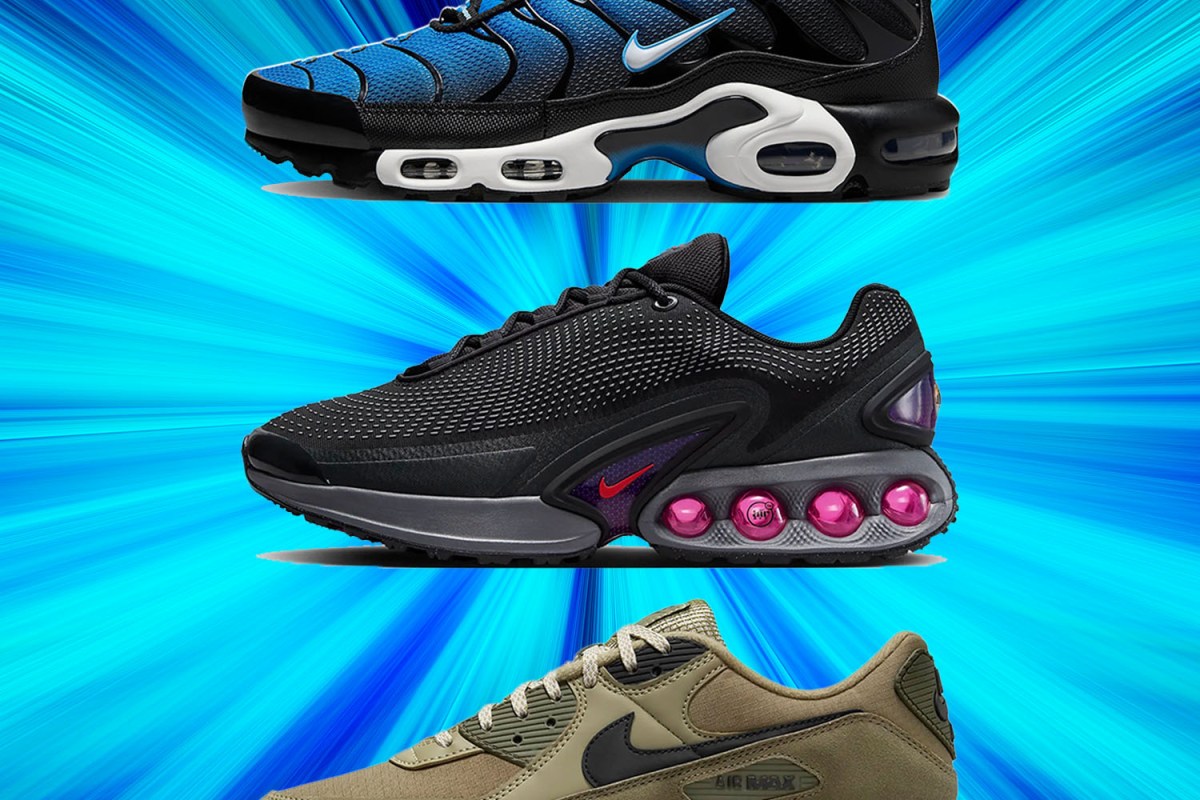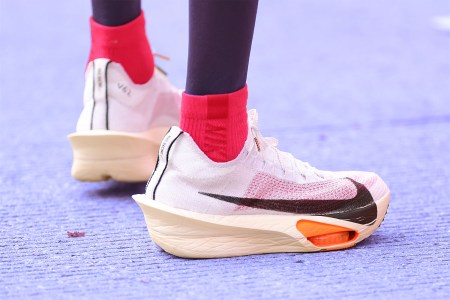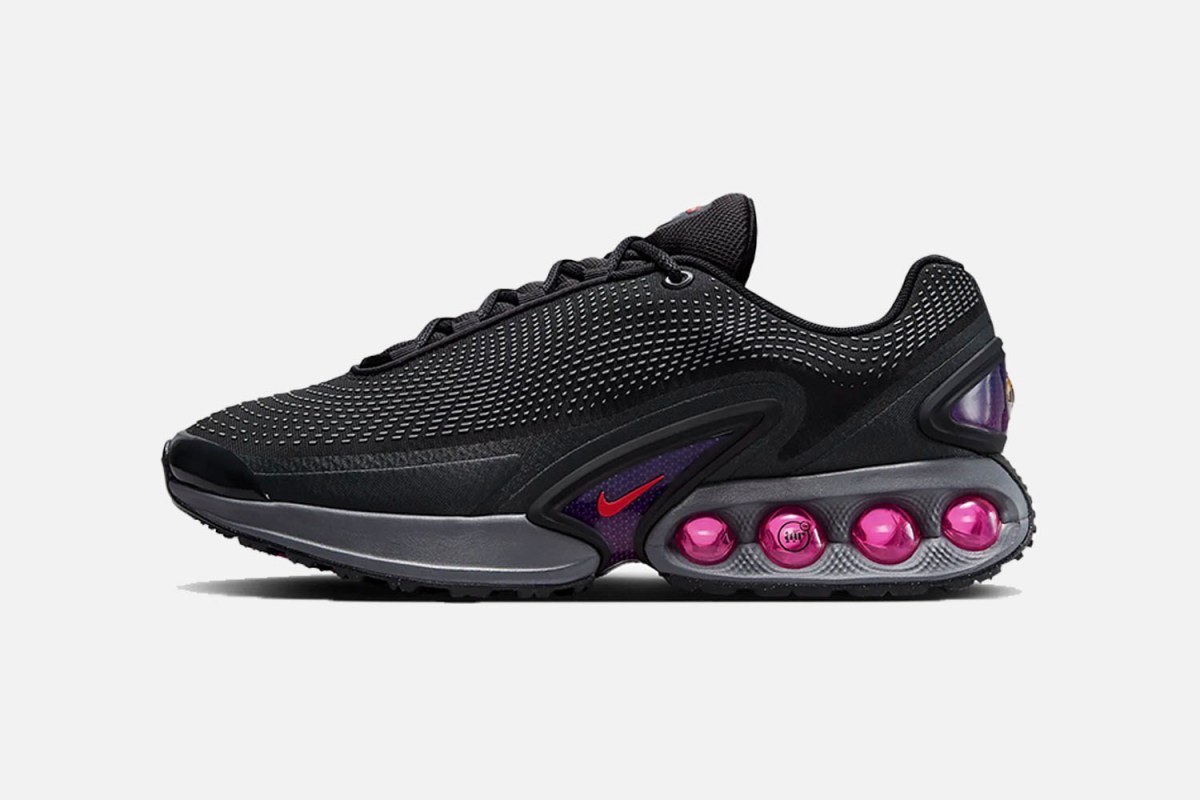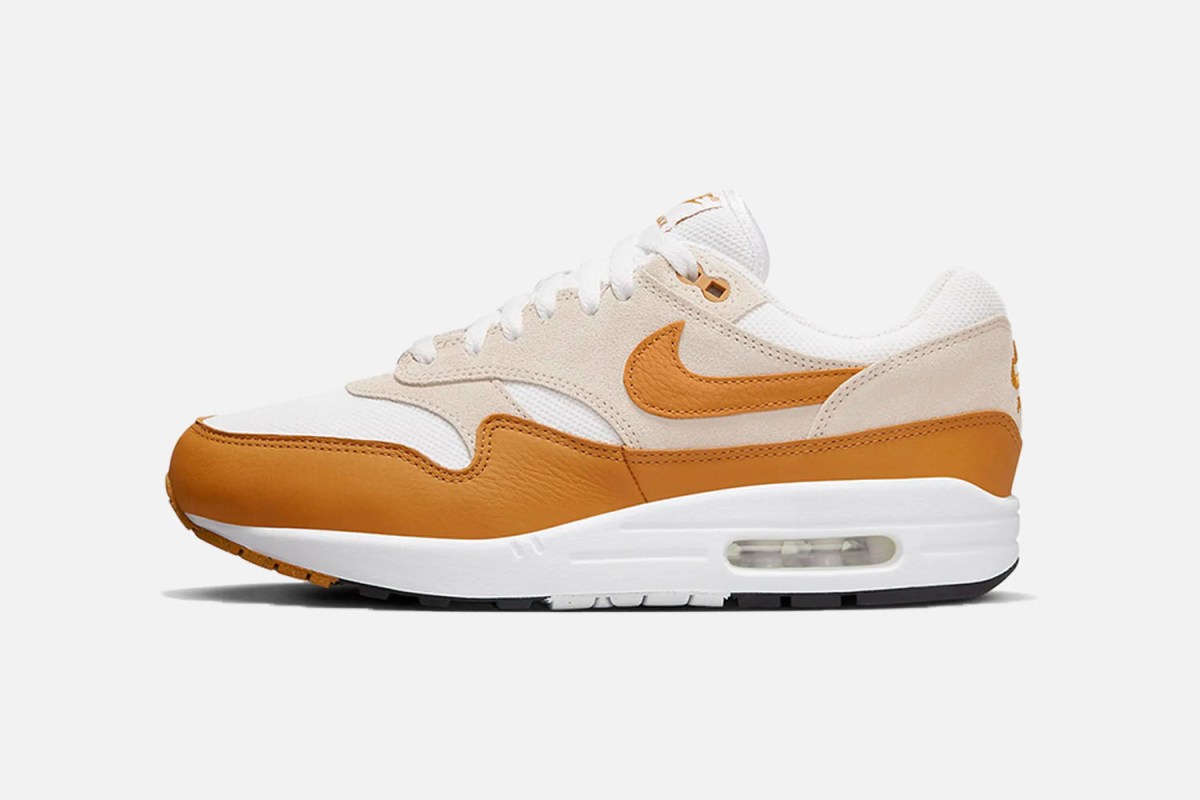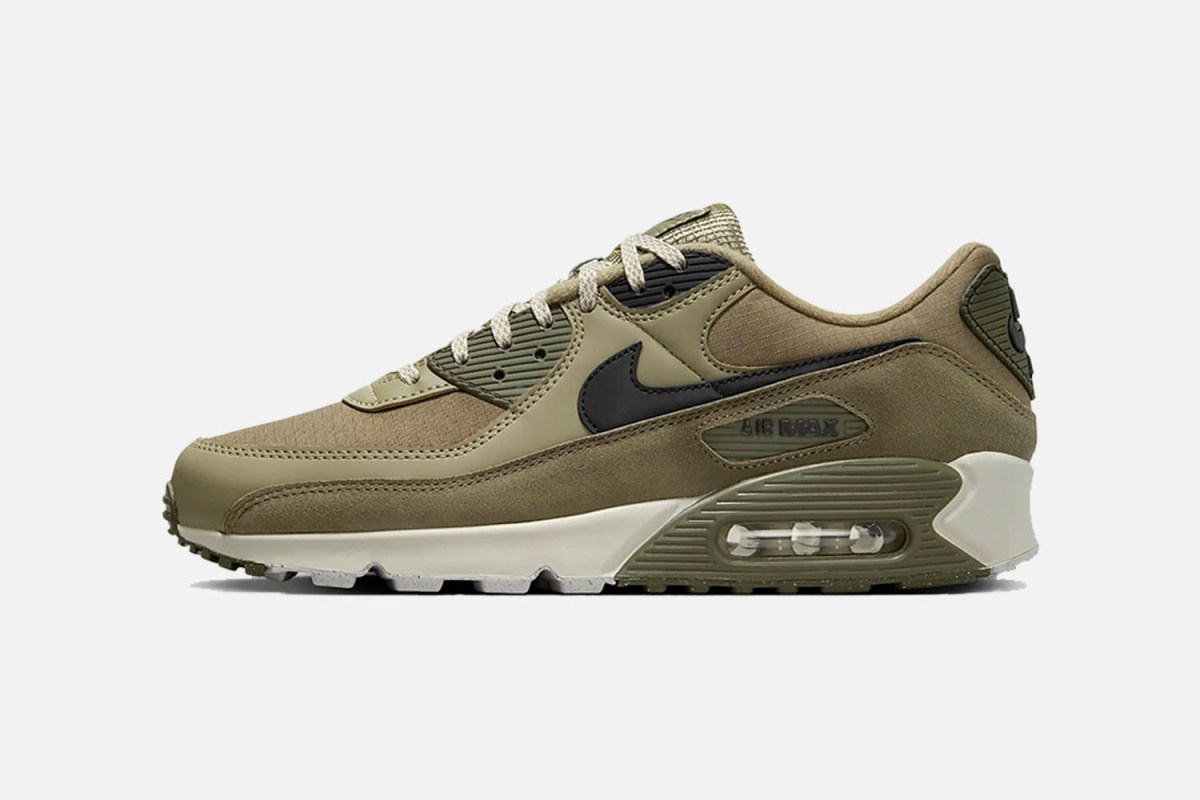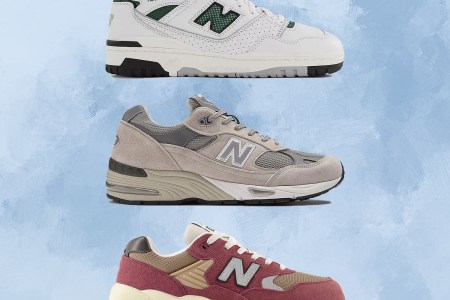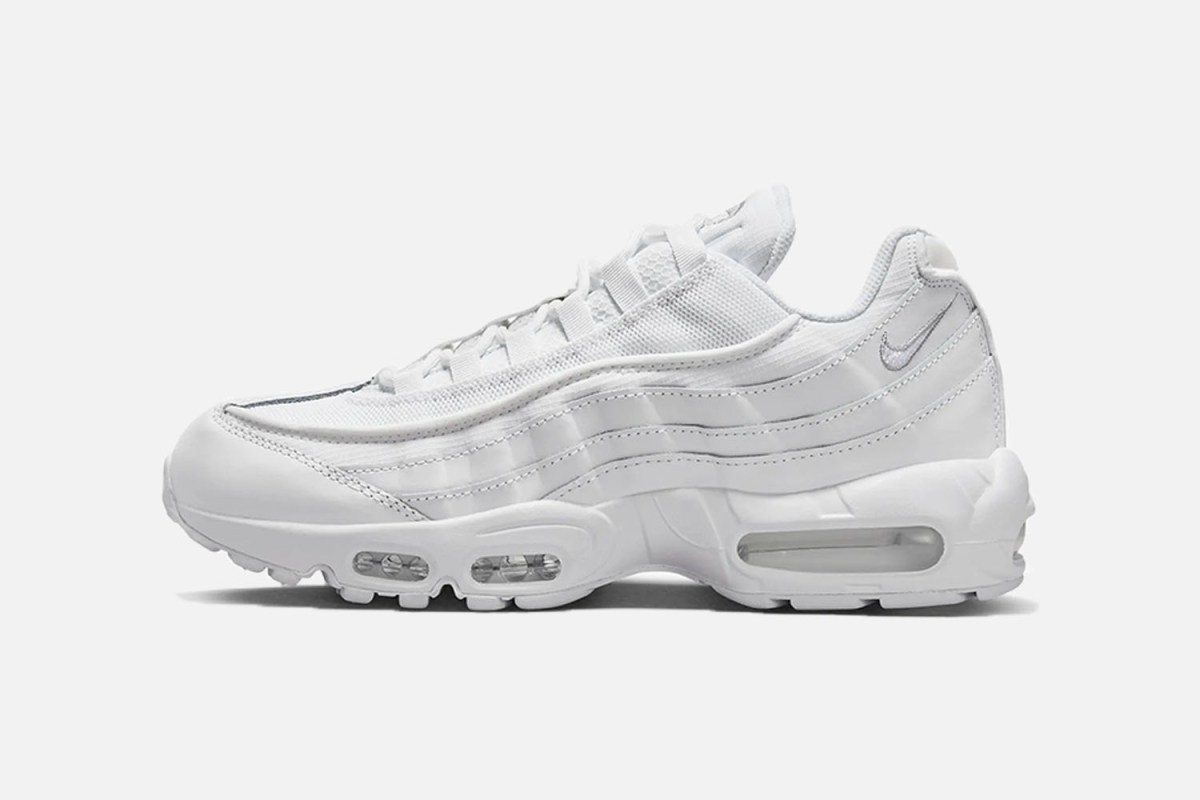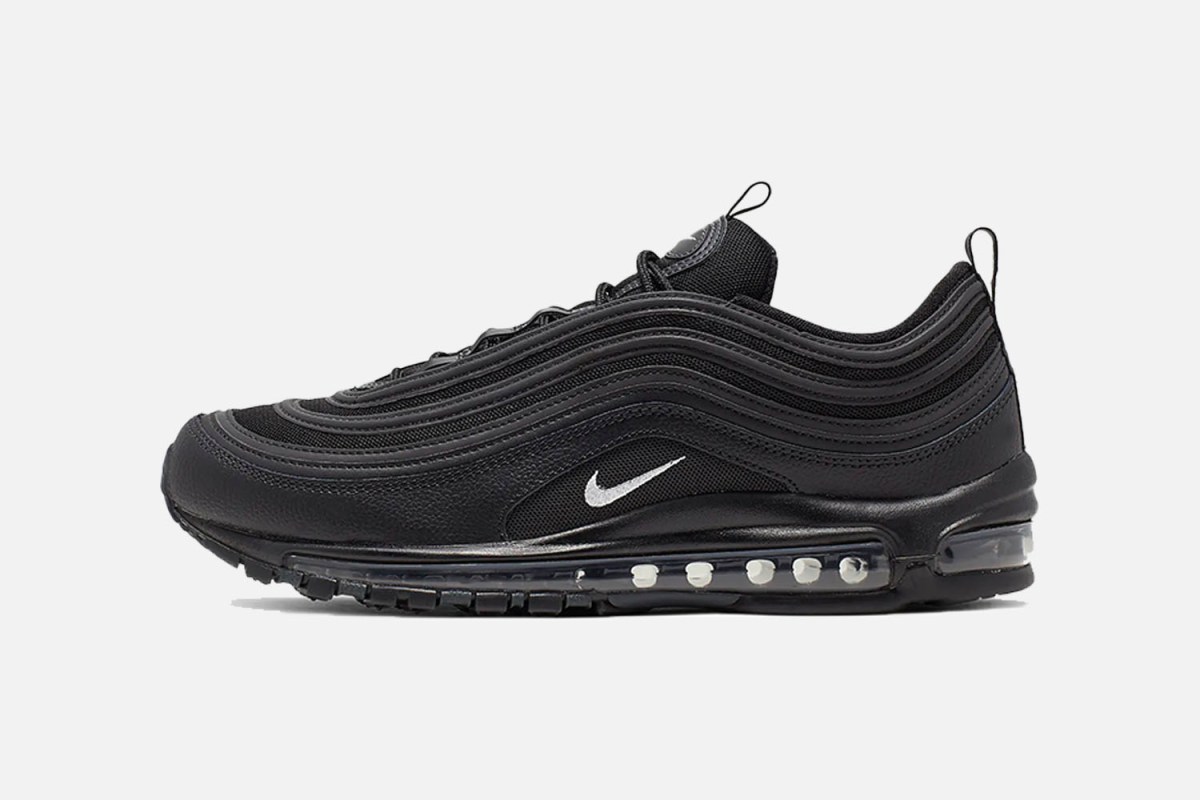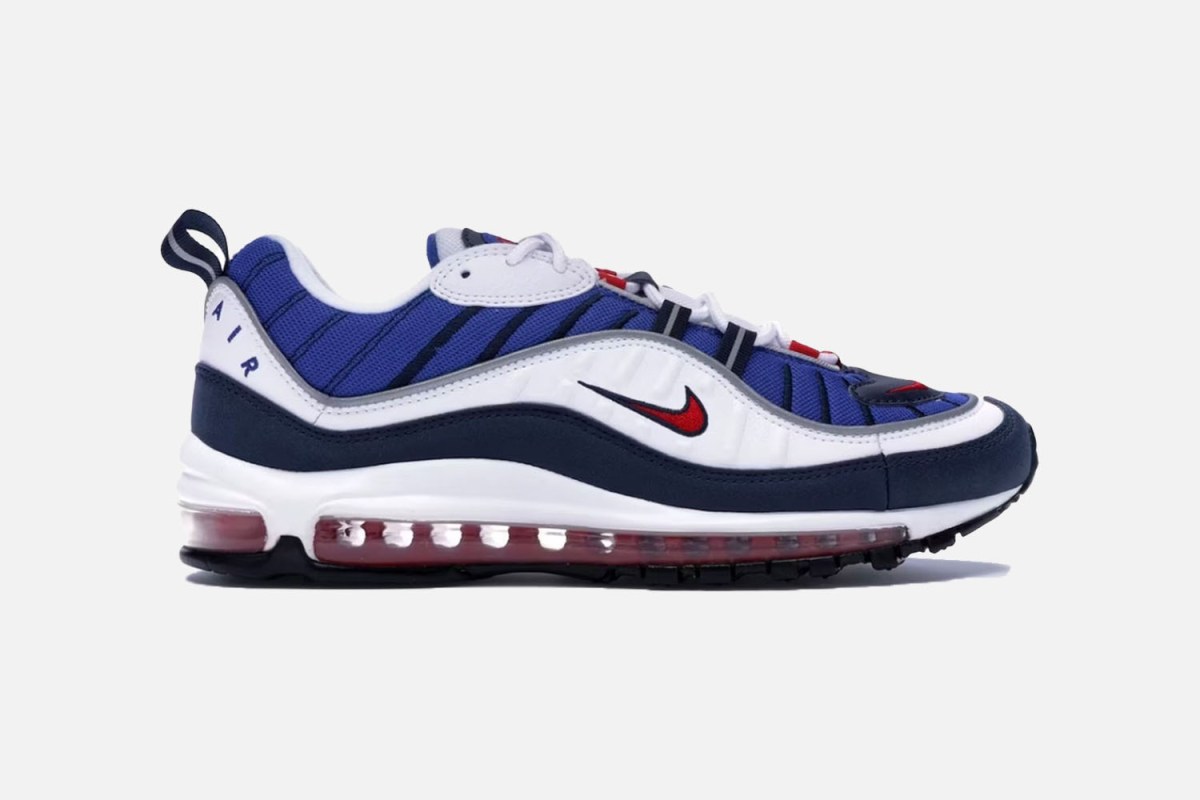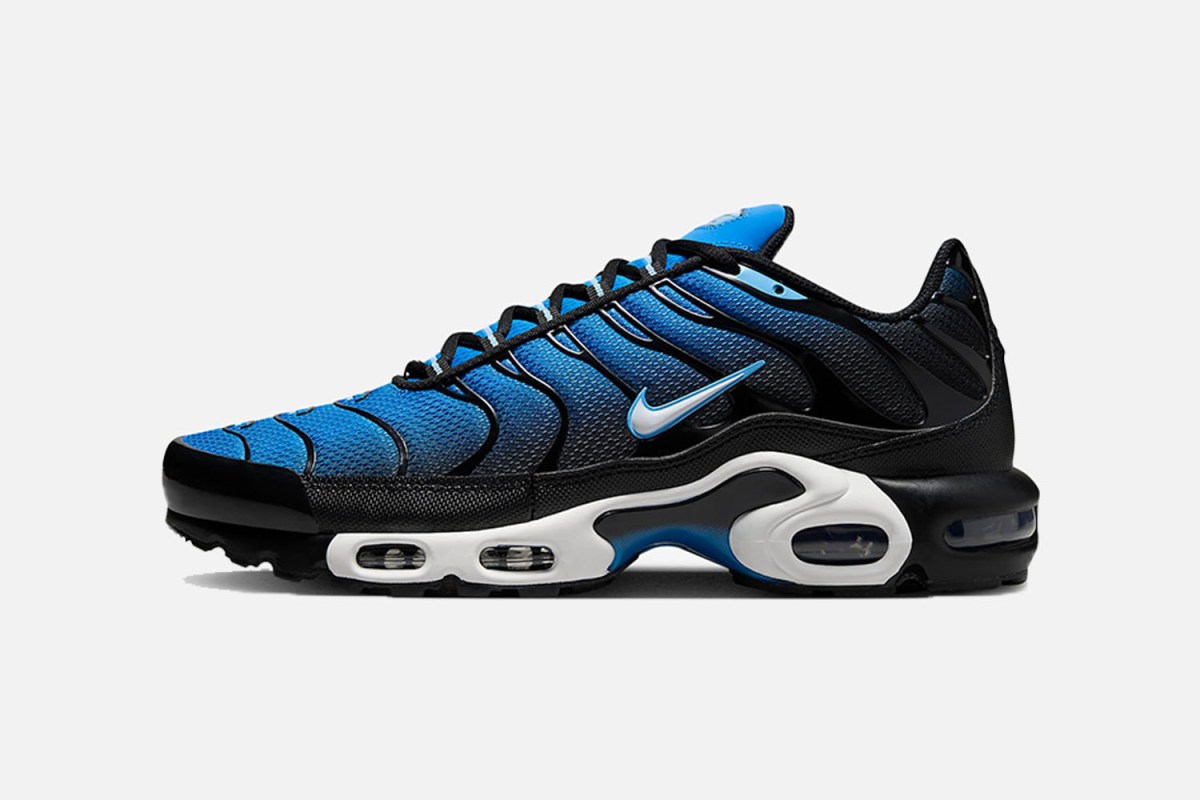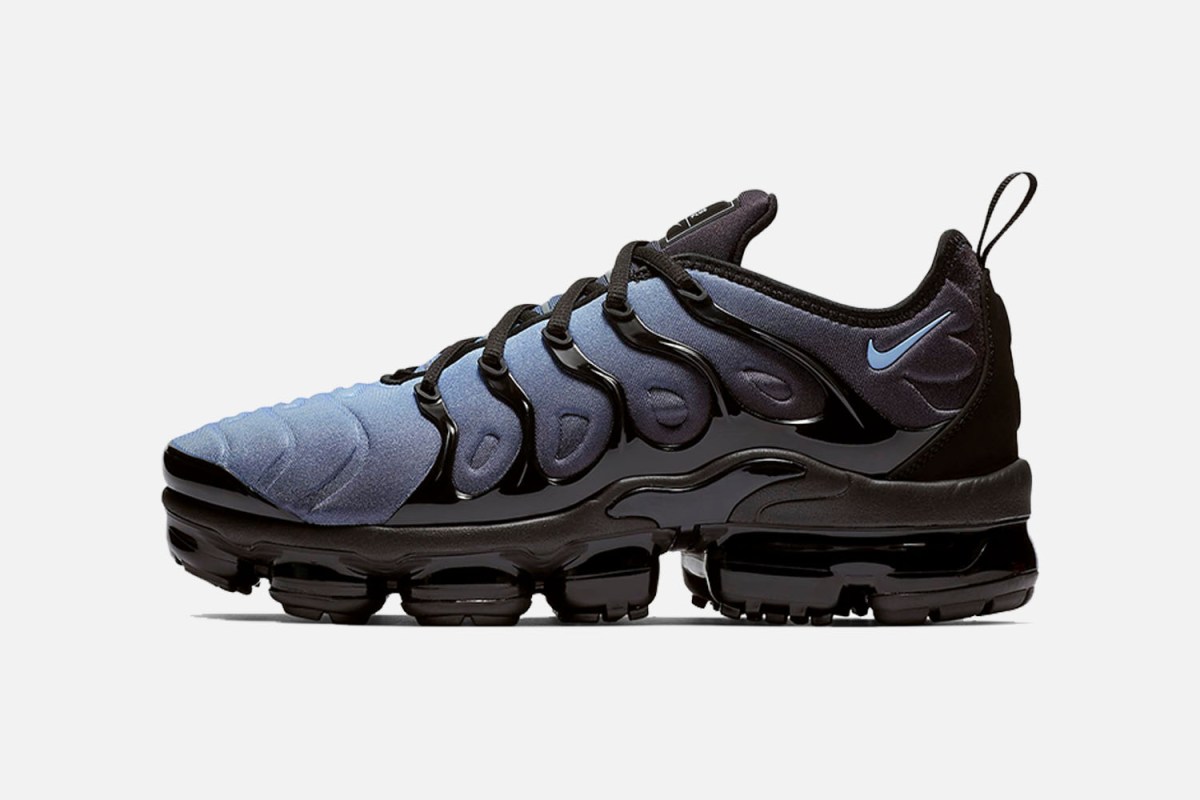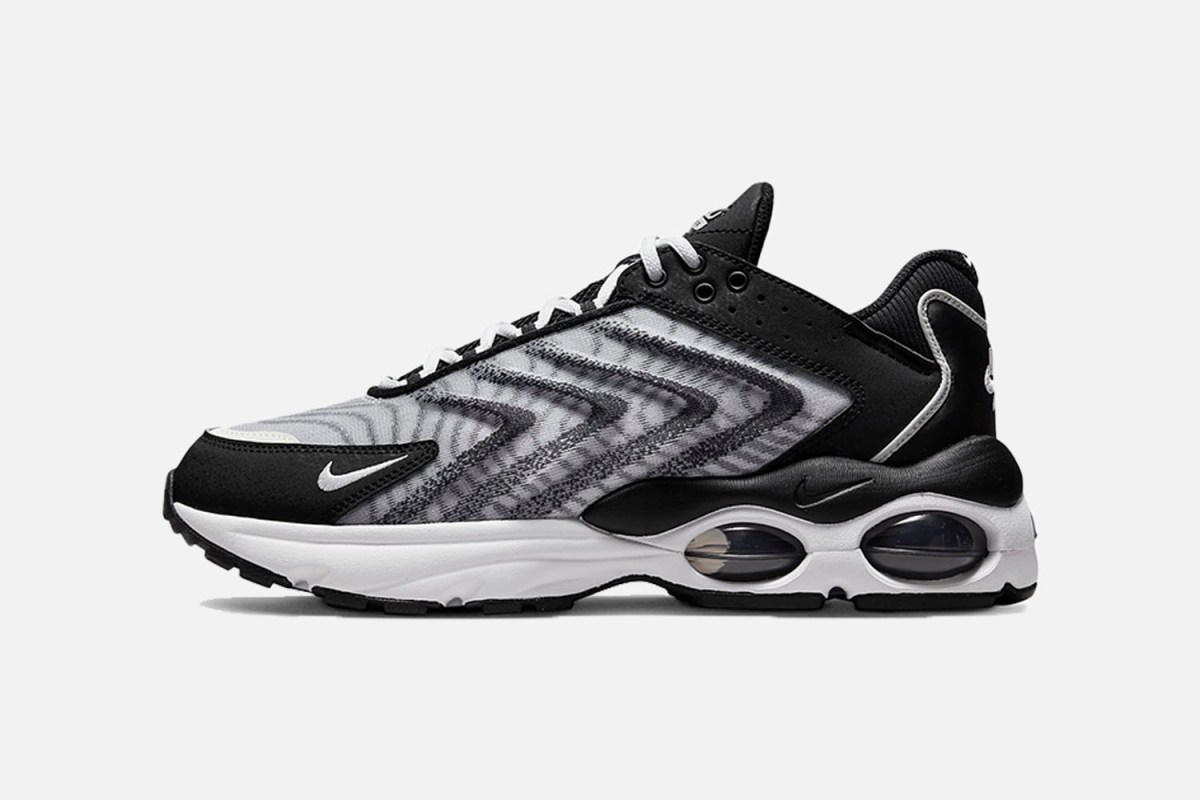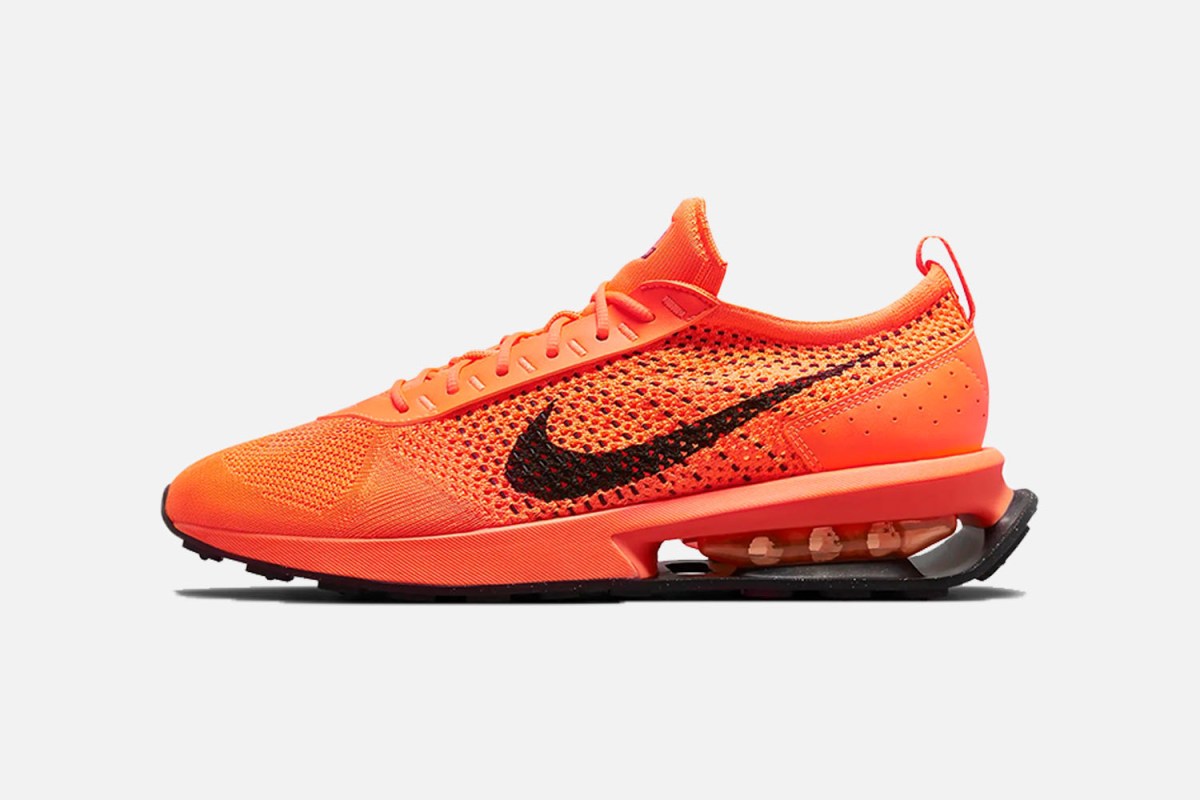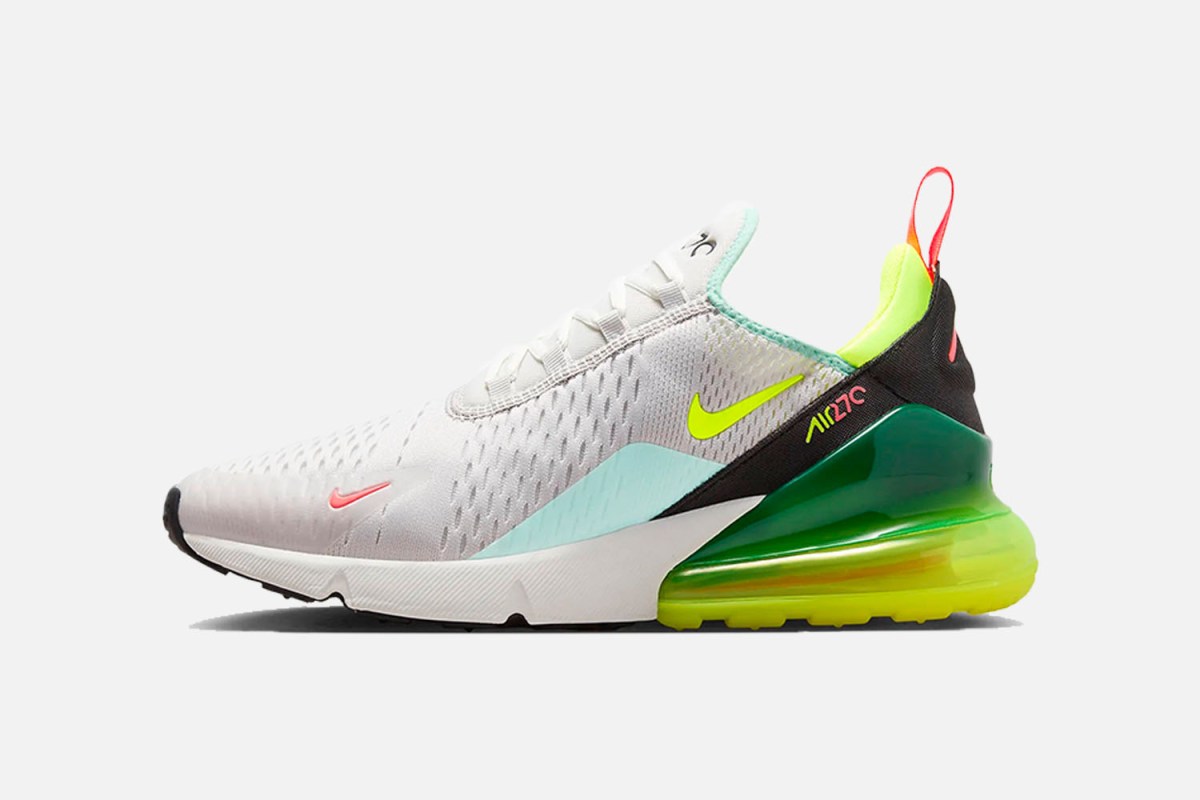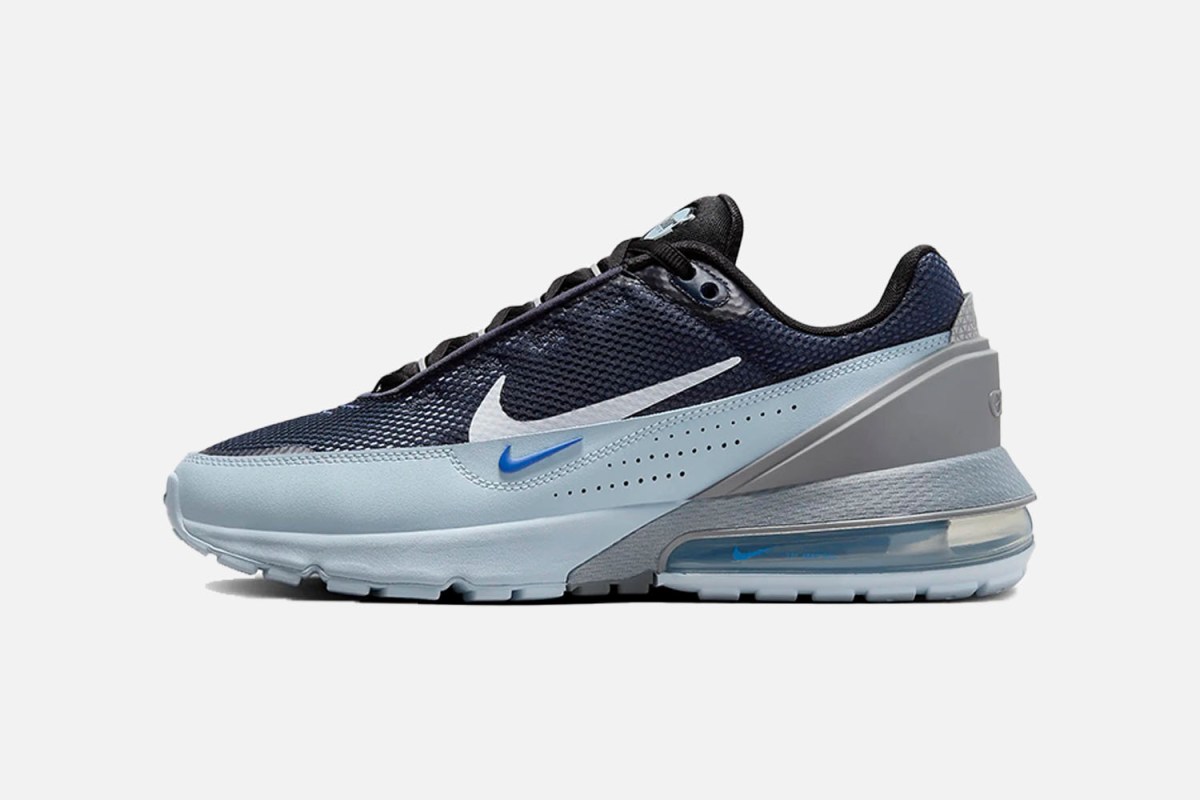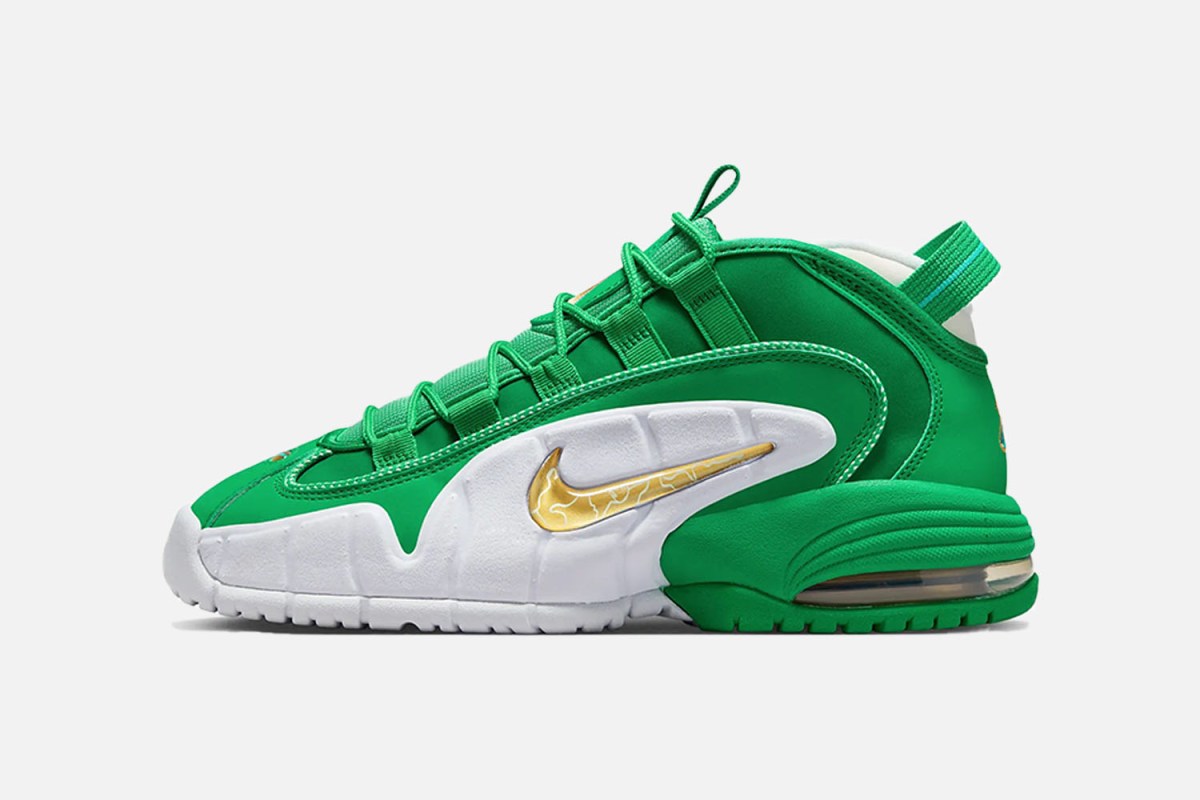Nota bene: All products in this article are independently selected and vetted by InsideHook editors. If you buy something, we may earn an affiliate commission.
It’s impossible to discuss hall-of-fame sneakers — the ranks of which include the Adidas Samba, New Balance 990s, Converse All Stars — without immediately namechecking Nike. The Swoosh has produced some of the most iconic shoes of all time, from the hallowed Air Jordan 1 to the record-breaking Alphafly. But one style in particular holds a cultural cache unparalleled by even the most popular of kicks: the Nike Air Max.
Nike Air Max: A Sneaker Four Decades In the Making
In 1978, Nike debuted the Air Tailwind, the first sneaker to utilize NASA aerospace engineer Marion Frank Rudy’s (or Frank Rudy) “air bag” technology, a process that captured dense gases in rubber membranes, which would then be used in a shoe’s midsole to help reduce the impact of steps on one’s body. Sounds like something right out of a movie, right? The technology would go on to become one of Nike’s most important inventions, spawning a series of sneakers that includes some of the most iconic and recognizable silhouettes — many of them falling under the Air Max umbrella.
Nike’s Latest Super Shoe Just Dropped. Here’s What You Need to Know.
The Nike Alphafly 3 released…and then immediately sold outSince the release of the very first Air Max in 1987, fittingly called the Air Max 1, there have been innumerable releases and versions in the decades since, some entirely new or others just slight tweaks of past designs. And while the shoe was designed with performance in mind, and still is, they’ve far surpassed their intention of being just a running shoe, having found their way into the closets of runners, hypebeasts, sneakerheads and those who just appreciate a damn good sneaker.
What Does “Air Max” Mean, Exactly?
As previously mentioned, Nike’s Air Max tech started as a veritable sneaker airbag — pressurized gas pumped into a plastic sole unit — and has slowly evolved over, incorporating long “visible air” plates, pumped-up bubbles and new materials to incorporate more of the swoosh’s signature foamless cushioning into the ever-changing silo.
We’ve compiled a guide to help you better understand the variety of Air Max sneakers that exist, from the original to more recent styles like the Pulse and re-released Penny, with occasional mention of previous styles that have yet to be retro’d (here’s hoping, though). So go ahead and see what all the hype is about — you won’t regret it.
Nike’s Air Max Sneakers: Which One Is Right for You?
Release: 2024
We’re living in the future. At least, according to Nike’s latest Air Max. Dubbed the DN, the just-announced experimental kicks are set to introduce the latest development in Nike Air tech. The “Dynamic Air” unit system — composed of two sets of dual-pressure tubes that use pressure displacement across the foot for the smoothest transition possible — purportedly provides maxed out comfort, energy and motion in conjunction with a multilayer mesh upper, cushioned midsole and major lifestyle vibe. Look out for the DN to drop on 3/26 — Air Max day, naturally.
Release: 1987
Arriving in 1987 thanks to Tinker Hatfield, the very first Air Max gleaned inspiration from the architecture of the Centre Pompidou in Paris, specifically the building’s exposed interior, which is reflected in the shoe’s visible Air technology. Adapted countless times — the sneaker’s endless editions range from replicas to special suede versions (seen above) to golf-specific reimaginations of the iconic shoe — the Air Max 1 remains a fundamental pillar of sneaker history.
Release: 1990
Three years later, Tinker Hatfield set out to completely rework the Air Max 1, seeking to further emphasize the Air technology with bold accents surrounding the window. The sneaker continues to endure not only as one of the most popular silhouettes among the Air Max collection but shoes in general, finding favor year after year among sneakerheads and non-sneakerheads alike. Colorways like “Infrared” continue to be some of the most sought-after sneakers of all time, but newer revelations — GORE-TEX chief among them — have kept the silo fresh, 30 years on.
Here’s Exactly What the New Balance Numbers Mean
Which model is right for you?Release: 1995
In the early 1990s, Nike found themselves wanting to depart from the original design of the Air Max in an effort to breathe new life into the line. Designer Sergio Lozano was granted complete creative control, and from that the Air Max 95 was born, a sneaker inspired by Oregon’s nature and the process of erosion, the upper panels, which typically fade from light to dark colors, reflect this process. Lozano also cites human anatomy as inspiration, the tendons and muscles of one’s foot inspiring the upper while the rear view of the sneaker mimics a spine.
Release: 1997
Initially thought to be inspired by the bullet trains of Japan (hence the original grey colorway of the shoe being dubbed ‘Silver Bullet’) designer Christian Tressler found inspiration for the sneaker in the ripples made by drops of water in a pond, recreating this effect in the layered uppers. The 97 was the first sneaker to not only introduce full-length cushioning but a hidden lacing system too.
Release: 1998
Just one year after the release of the sleek Air Max 97, Nike went in a bulkier direction for the 98, keeping the same fully-cushioned sole while trading the streamlined uppers of its predecessor for ones that were slightly more substantial and busy. It wasn’t long before the brand released a new iteration of the sneaker, the 98 TL, featuring a fully visible Air sole and redesigned uppers. Despite the OG 98 experiencing a renaissance of sorts in recent years, the TL version has yet to be retro’d. Good luck finding a pair for cheap, though.
Release: 1998
Following the lackluster reception to the AM98, the Air Max Plus was released in the same year of 1998, receiving a more positive response. Designer Sean McDowell’s inspiration for the sneaker arrived long before he even started working at Nike: a sketch of Florida at dusk eventually served as the main reference for the design. The sneaker marked the debut of the brand’s Tuned Air technology — whereas the goal of the previous Air models was to feature as much of the Air technology as possible, the Air Max Plus favored hemispheres (the half-spheres found in the sole and Air unit) which would work to reduce pressure in the heel. It’s since spawned variants, (i.e. the Air Max Plus Drift).
Release: 2018
What do you get when you take the ’98 Air Max Plus and stick it on a bubbly VaporMax sole? This shoe, naturally. A bold design, the floating cage and revolutionary VaporMax Air technology might not be for everyone, but there’s zero denying the comfort — or visibility — that comes inherent to this Air Max update.
From Samba to Superstar: Which Adidas Sneakers Are Right for You?
The three-stripe staples, explainedRelease: 2022
Landing somewhere between moon boot and dad shoe, the Air Max TW melds past and present with a ’90s-inspired silo and giant windowed heel air bubbles. The gradient striping is a direct nod to the vintage Nike styles, but don’t get it twisted — the TW is very of the now.
Release: 2012
Similarly to the revolutionary Air Max pockets, Nike’s Flyknit singlehandedly changed the game when it touched down in 2012. Blending the two iconic Nike tech tentpoles into one tidy little runner, the Air Max Flyknit Racer is impossibly light and incredibly bouncy.
Release: 2018
With Air Maxes having long been used for purposes other than running, Nike decided to make the first-ever lifestyle Air Max, the 270. Inspired by the AM93 and AM180, the shoe features 270 degrees of visibility in the Air Unit which also happens to measure as the tallest unit yet, clocking in at 32mm. Following the release of the 270 came the 270 React, which kept the silhouette of the original and combined it with the brand’s React foam cushioning.
Release: 2023
One of the most recent Air Max releases, the Pulse was designed to pay homage to the London music scene (part of a bigger push to embrace the likes of blokecore and terrace culture), and Nike has done an admittedly bang-on job. The textile-wrapped midsole complements an otherwise Air Max 1-leaning silhouette, and point-loaded Air cushioning—revamped from the incredibly plush Air Max 270— sustains the signature Air Max look without compromising on innovation. Similarly, the Pulse Roam improves on the Air Max formula with ultra-cushioned comfort.
Release: 2023
Penny Hardaway is back, baby. Nike’s replica of the hoops original is accurate to a trey, from a jeweled Swoosh to the wing piping on the sides. We’re not saying you’ll immediately be able to dunk after lacing these up…but we’re not not saying that, either. Don’t forget about Stussy’s collab, either.
We've put in the work researching, reviewing and rounding up all the shirts, jackets, shoes and accessories you'll need this season, whether it's for yourself or for gifting purposes. Sign up here for weekly style inspo direct to your inbox.
